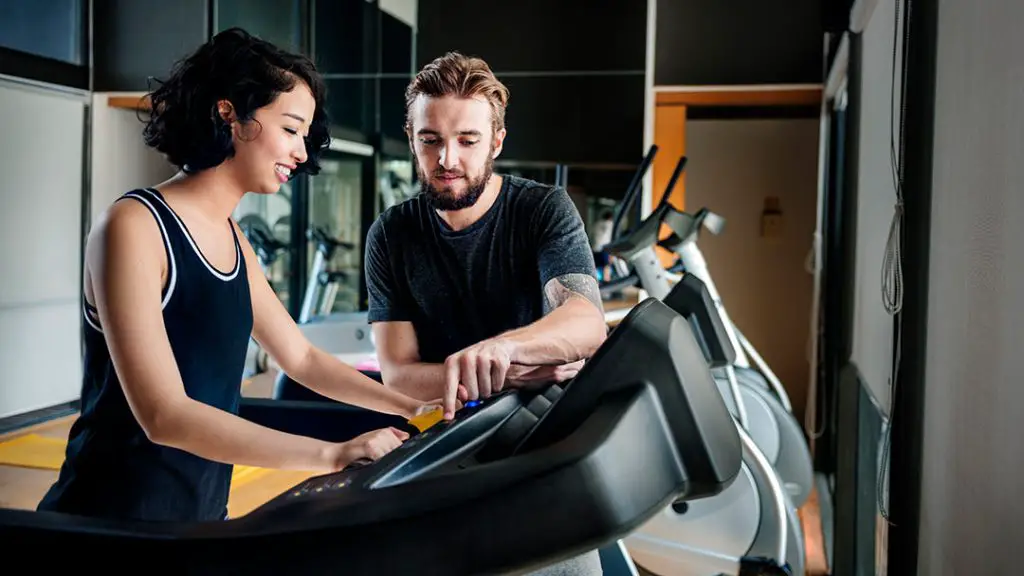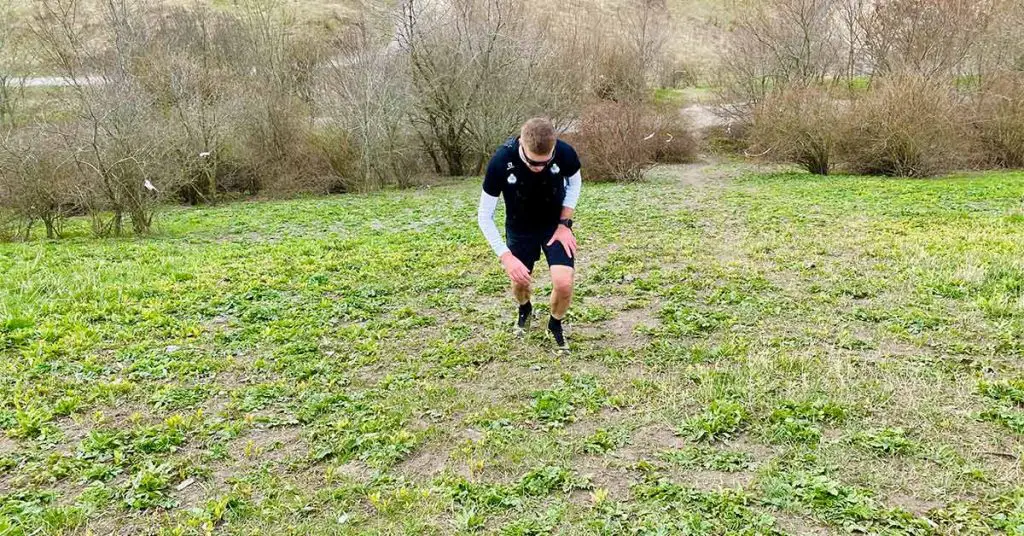Estimated read time: 5 minutes.
No one wants to get injured while running, but it’s easy to do if you’re not careful. Here are 15 tips for staying safe on a treadmill. Whether you’re a beginner or an experienced runner, these tips will help you stay injury-free while getting your workout in.
1. Maintaining Good Posture
Maintaining good posture is one of the most important things to focus on while running on a treadmill. Remember to keep your head up and your shoulders back. Focusing on a point in front of you while you run is helpful. This will help you keep your head up and help you avoid hunching over.
2. Put away your phone.
One of the biggest distractions while on the treadmill is your phone. If you’re constantly checking it for texts or notifications, you’re not only missing out on the benefits of your workout but also putting yourself at risk for injury. So, put away your phone and focus on your run.
3. Start with a straddle
Straddling the treadmill’s deck before turning it on is important because it helps prevent accidents. If you were to turn on the machine without first straddling the deck, the pace could be faster than you expect, your feet could slip, and you could fall off the back of the treadmill. In addition to being painful, this could also lead to severe injuries.
How to Straddle the Deck? Straddling the deck is simple; stand with one foot on each side of the deck. Once the treadmill is turned on, put it on a slow speed, step onto the belt, and begin your workout. Increase its speed slowly until you are comfortable with the speed.
4. Use your treadmill’s safety features
Before discussing specific safety features, it’s important to read the treadmill manual and guidelines. Just like with any other exercise equipment, you must take the time to read and understand the manufacturer’s instructions before using a treadmill. By doing so, you’ll familiarize yourself with the machine and learn about any potential hazards that could occur while using it.
The emergency stop button is one of the most important safety features on modern treadmills. This button is usually located near the start button and is designed to be easily accessible in an emergency. Suppose you or someone else falls while on the treadmill; simply hitting this button will stop the machine immediately. Other safety features that you’ll find on most treadmills include handrails, nonslip surfaces, and heart rate monitors.
5. The Importance of Treadmill Placement
The recommended amount of space that should be left free around a treadmill is 3-4 feet on either side and 2-3 feet behind the machine. This may seem like a lot of space, but it’s necessary. It ensures you have enough room to run comfortably without feeling cramped or restricted in your movements.
Additionally, be sure to place your treadmill on a level surface away from direct sunlight and any potential hazards, such as cords or furniture. By following these simple tips, you can help ensure that your treadmill is placed in an optimal location for running.
6. Being Aware of Loose Clothing
Your clothes should be snug but not too tight while running on a treadmill. Loose clothing can get caught in the machinery and cause serious injuries. If possible, avoid wearing baggy sweatshirts or loose-fitting pants while running on a treadmill. If you wear loose clothing, ensure it’s tucked in so it doesn’t get caught while the machine is running.
7. The Importance of Proper Footwear
Just as important as wearing the right clothes is wearing the right shoes. When running on a treadmill, you need shoes that provide support and cushioning to reduce the impact on your joints. Running shoes also have special traction to help keep you from slipping on the treadmill belt. So, before you hit the gym, lace up a pair of supportive running shoes. Running barefoot or in socks is not recommended because it can lead to slips and falls.
8. Double-Tying Your Shoelaces
The last thing you want is your shoelace to come untied while running on a treadmill (or anywhere else, for that matter). To avoid this scenario, double-knot your laces before starting your run.
9. Wearing a heart rate monitor
If you’re new to exercising, monitoring your heart rate while working out is important. A heart rate monitor can help you keep track of how hard your heart is working and ensure that you stay within a safe range. Most modern treadmills have sensors that can detect your heart rate as you run. Alternatively, you can purchase a standalone heart rate monitor to wear while working out.
10. Stop Immediately If You Feel Dizzy or Tired
If you start to feel dizzy or tired at any point during your run, stop immediately and step off the treadmill. It’s important to listen to your body and know when to rest—continuing to run when you’re feeling dizzy or exhausted increases your risk of injury.
11. Stay hydrated
It’s important to stay hydrated, especially when exercising. Dehydration can cause dizziness and fatigue, so it’s important to drink plenty of fluids before, during, and after exercise. Pay particular attention to hydration during the summer months.
Drinking water regularly throughout the day will help keep your body properly hydrated. And if you’re feeling thirsty, that’s a sign that you’re already dehydrated, so drink up!
12. Keep Children Away From the Treadmill
Every year, children between the ages of 1 and 6 sustain more injuries on treadmills than any other age group. As a runner, it’s important to be aware of this statistic and take precautions to prevent treadmill-related injuries in your home.
One of the most important things you can do to prevent treadmill-related injuries is to keep the safety key out of reach when the treadmill isn’t being used. The safety key is designed to shut off the machine if it detects that the user has fallen or is in danger of falling. However, if the safety key is within reach, children may be tempted to play with it, which could lead to serious injury.
13.Regularly Inspections
Another important precaution you can take is to regularly inspect your treadmill and ensure it meets all safety standards and guidelines. All gym equipment should be periodically inspected and maintained according to the manufacturer’s recommendations. By taking these simple precautions, you can help prevent treadmill-related injuries.
Conclusion
Treadmills are a great way to get a workout, but it’s important to take safety precautions to prevent injuries. Remember to dress appropriately, double-knot your shoelaces, and stay hydrated. Most importantly, if you feel dizzy or tired, stop immediately and step off the machine. Following these simple tips can help ensure a safe and enjoyable treadmill experience.
FAQ
How do I prevent my shoelaces from coming untied?
The best way to prevent your shoelaces from coming untied is to double-knot them before starting your run.
What should I do if I feel dizzy or tired while running on a treadmill?
If you feel dizzy or tired, stop immediately and step off the machine. It’s important to listen to your body and know when to rest. Continuing to run when you’re feeling dizzy or exhausted increases your risk of injury
How often should I have my treadmill inspected?
All gym equipment should be regularly inspected and maintained according to the manufacturer’s recommendations. For most treadmills, this means having a professional inspection once a year.
- How Many Laps Around a Track is a 5K: Your Guide - October 22, 2023
- When is Track and Field Season? - October 22, 2023
- Understanding the Length: How Long Is a Running Track? - October 22, 2023




